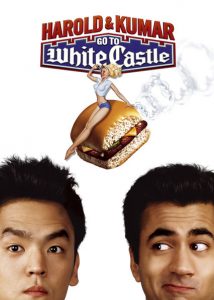When government health officials wrapped up a three-month investigation of a Salmonella Enteritidis outbreak that sickened 68 people in 10 states, the final report on Jan. 19 included nearly every detail — except the name of the place that sold the food.
JoNel Aleccia of msnbc.com writes the U.S. Centers for Disease Control and Prevention has refused to identify the source, other than as “Restaurant Chain A,” a Mexican-style fast-food chain.
“It will eventually come out and it will be the company that looks bad,” said Doug Powell, a professor of food safety at Kansas State University and author of a food safety blog. “A lot of these  problems could be reduced if government agencies were more transparent about how they decide when to go public.”
problems could be reduced if government agencies were more transparent about how they decide when to go public.”
Dr. Robert Tauxe, a top CDC official, defended the agency’s practice of withholding company identities, which he said aims to protect not only public health, but also the bottom line of businesses that could be hurt by bad publicity.
“The longstanding policy is we publicly identify a company only when people can use that information to take specific action to protect their health,” said Tauxe, the CDC’s deputy director of the Division of Foodborne, Waterborne and Environmental Diseases. “On the other hand, if there’s not an important public health reason to use the name publicly, CDC doesn’t use the name publicly.”
The trouble, say food safety advocates, is that it’s not clear when or why CDC officials decide to withhold the identity of firms involved in outbreaks and when they decide to go public.
"No one is happy, and that’s largely because there are no guidelines people can at least point to, whether they agree with the guidance or no," Powell said.
Tauxe acknowledged there’s no written policy or checklist that governs that decision, only decades of precedent.
“It’s a case-by-case thing and all the way back, as far as people can remember, there’s discussions of ‘hotel X’ or ‘cruise ship Y,” he said.
Epidemiology, like humans, is flawed. But it’s better than astrology. The more that public health folks can articulate when to go public and why, the more confidence in the system. Past risk communication research has demonstrated that if people have confidence in the decision-making process they will have more confidence in the decision. People may not agree about when to go .jpeg) public, but if the assumptions are laid on the table, and value judgments are acknowledged, then maybe the focus can be on fewer sick people.
public, but if the assumptions are laid on the table, and value judgments are acknowledged, then maybe the focus can be on fewer sick people.
I understand the flexibility public health types require to do their jobs effectively, but much of the public outrage surrounding various outbreaks – salmonella in tomatoes/jalapenos, 2008, listeria in Maple Leaf deli meats, 2008, the various leafy green recalls and outbreaks of 2010, and the delay in clamping down on Iowa eggs – can be traced to screw ups in going public.
It’s long been a tenet of risk communication that it is better to default to early public information rather than later. People can handle all kinds of information, especially when they are informed in an honest and forthright manner.
 I had a hockey friend over for lunch one day, we ate steak and watched Harold and Kumar, and it was one of the best times ever.
I had a hockey friend over for lunch one day, we ate steak and watched Harold and Kumar, and it was one of the best times ever.
 problems could be reduced if government agencies were more transparent about how they decide when to go public.”
problems could be reduced if government agencies were more transparent about how they decide when to go public.”.jpeg) public, but if the assumptions are laid on the table, and value judgments are acknowledged, then maybe the focus can be on fewer sick people.
public, but if the assumptions are laid on the table, and value judgments are acknowledged, then maybe the focus can be on fewer sick people. White Castle, has been experienced by some of the 155 sick with salmonella who ate at a Taco Bell since April.
White Castle, has been experienced by some of the 155 sick with salmonella who ate at a Taco Bell since April. collapsed markets; for retailers who say they were now going to get serious about questioning their suppliers; and, for consumers who now realize that fresh produce is a significant source of foodborne illness and are voting with their wallets and their forks how can they know if the fresh stuff is safe??
collapsed markets; for retailers who say they were now going to get serious about questioning their suppliers; and, for consumers who now realize that fresh produce is a significant source of foodborne illness and are voting with their wallets and their forks how can they know if the fresh stuff is safe?? A Canadian visiting, “beautiful Northern Kentucky, famously (mis)marketed as the South Side of Cincinnati” writes in a
A Canadian visiting, “beautiful Northern Kentucky, famously (mis)marketed as the South Side of Cincinnati” writes in a